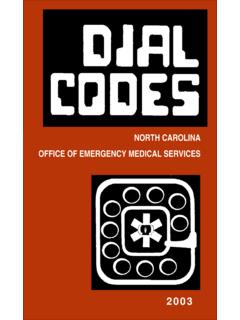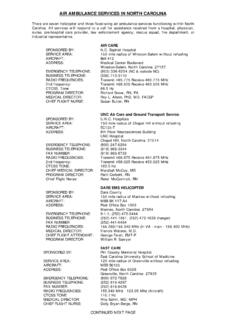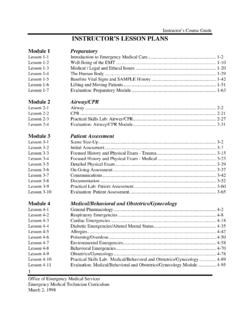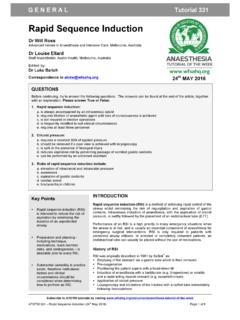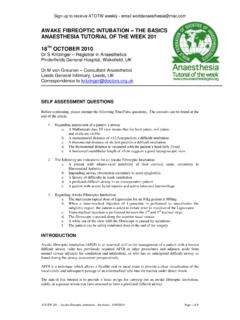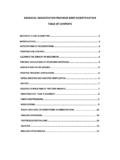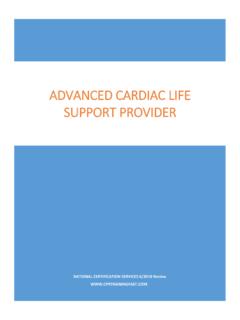Transcription of Airway Rapid Sequence Intubation - The North …
1 Airway , Rapid Sequence Intubation (OPTIONAL)Assemble Airway EquipmentSuction equipmentAlternative Airway DeviceGeneral Protocols Preoxygenate 100% O2 Etomidate mg / kg IV / IOSuccinylcholine mg / kg IV/ IOorRocuronium 1 mg / kg IV / IO(if Succinylcholine contraindicated)Intubate tracheaConsider Restraints Physical ProcedureMay Repeat One TimeNOAfter 2nd cyclePPPP lacement Verified Continuous CapnographyPPPC onsider Gastric Tube ProcedurePEvidence of Head Injury / CVA or Reactive Airway Disease?Indications for RSIF ailure to protect the airwayUnable to oxygenateUnable to ventilateImpending Airway compromiseProcedure will remove patient s protective Airway reflexes and ability to must be sure of your ability to intubate before beginning this procedure. Red Text are the key performance indicators used to evaluate protocol compliance. An Airway Evaluation Form must be completed on every patient who receives Rapid Sequence 1, 2 and 3 should be utilized together (even if agency is not using RSI) as they contain very useful information for Airway management.
2 PExit toFailed AirwayProtocolYESNON otify Destination or Contact Medical ControlAwakening or Moving after Intubation with sedative and paralyticYESNOIV Procedure (preferably 2 sites)IPProtocol 3 Any local EMS System changes to this document must follow the NC OEMS Protocol Change Policy and be approved by OEMS2012 General ProtocolsPearls Agencies must maintain a separate Performance Improvement Program specific to Rapid Sequence Intubation . This protocol is only for use in patients with an Age 12 or greater or patients longer than the Broselow-Luten Tape. Once a patient has been given a paralytic drug, YOU ARE RESPONSIBLE FOR VENTILATIONS if desaturation occurs. Continuous Waveform Capnography and Pulse Oximetry and are required for Intubation verification and ongoing patient monitoring Before administering any paralytic drug, screen for contraindications with a thorough neurologic exam. If First Intubation attempt fails, make an adjustment and try again: Different laryngoscope blade Change head positioning Different ETT size Continuous pulse oximetry should be utilized in all patients.
3 Change cricoid pressure Consider applying BURP maneuver (Back [posterior], Up, and to pt s Right Pressure) This procedure requires at least 2 EMT-Paramedics. Divide the workload ventilate, suction, cricoid pressure, drugs, Intubation . Protect the patient from self extubation when the drugs wear off. Longer acting paralytics may be needed post- Intubation . Consider Naso or orogastric tube placement in all intubated patients to limit aspiration and decompress stomach if , Rapid Sequence Intubation (OPTIONAL)Protocol 3 Any local EMS System changes to this document must follow the NC OEMS Protocol Change Policy and be approved by OEMS2012
